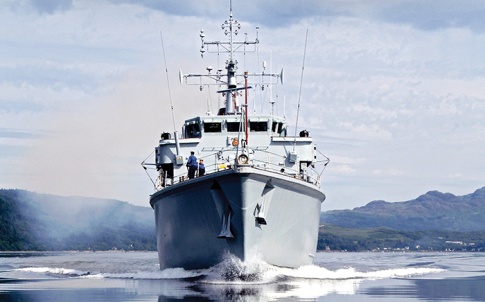Unexploded sea mines remain a hazard in the waters around Britain but in November 1945 they were being hailed as a key weapon in the defeat of Hitler. What set the sea mines of the Second World War apart from their predecessors was the fact that they could be used offensively, and the magnetic mine played its part in taking the fight to enemy targets.
The UK’s first foray into magnetic mines came with the M Sinker during the First World War. As noted by our correspondent, work on the magnetic mine and torpedoes was hastened greatly by the realisation in 1935 that Britain had to rearm.
“Hand in hand with these developments went the investigations into the magnetic properties of ships which formed the groundwork for the system of conferring a high degree of immunity upon ships by ‘degaussing’ them,” the author said. “As a result of all the work upon development, we produced a very satisfactory and robust form of magnetic mine. In the development of our magnetic mine we had worked on the principle of using the horizontal component of a ship’s magnetism to actuate the firing mechanism. This component had been selected because it is the stronger of the two except immediately under and close to the bottom of a ship, and because it is, for the practical purposes of mine design, unaffected by the earth’s magnetic field.”
The use of the horizontal component presented other advantages. According to the author, the sensitive element in British magnetic mines consisted of a CR (coiled rod).

“This rod had to lie horizontal and, since our mines were long and torpedo shaped – because they were designed to be dropped from torpedo-carrying aircraft of the Fleet Air Arm – we were able to use a CR rod running through the charge and thus nearly as long as the mine itself,” said the author. “This was a great advantage, for the sensitivity of the mine depends upon the length of the CR rod. The fact that these mines were robust was of great importance, for comparatively little was then known about shock and the absorption of shock, particularly as applied to the delicate instruments of the modern mine when it is dropped into the sea from an aircraft.”
In tests, it was found that the mine could be dropped with a parachute measuring 5ft in diameter. The early lack of precise knowledge in dealing with the shock of dropping the mine had an incidental, but very important, effect upon the future development of Britain’s mines.
“In designing the mine, considerable space was left in the chamber housing the actuating mechanism in case additional shock-absorbing packing should be found necessary. That refinement was not needed, and the extra space allowed us to fit developments to our existing mine without having the casing redesigned. Our magnetic mine was cylindrical in shape. The parachute was attached at one end and the other end was chamfered in order to turn the mine to the horizontal in the water so that it would not stick nose down in the seabed.”
The Engineer’s naval correspondent added that Germany’s use of the mine was tactically flawed.
“That is not to say that it did not cause us casualties and much food for thought. It did. But the necessary reticence regarding our own mining campaign and technical developments in this field of sea warfare has tended to give the impression that the Germans called the tune, and that we followed panting and occasionally, by lucky chance, producing a timely antidote to German ingenuity.
“Nothing could be further from the truth. We used secrecy to our great advantage and, taking the mine warfare of the past six years as a whole, we were ahead of the Germans both in the production of mines fitted with ‘circuits’ calculated to provide work and headaches for the German technicians, and in the rapid production of effective sweeping arrangements and antidotes to the new forms of mine produced by the enemy.”




Swiss geoengineering start-up targets methane removal
No mention whatsoever about the effect of increased methane levels/iron chloride in the ocean on the pH and chemical properties of the ocean - are we...